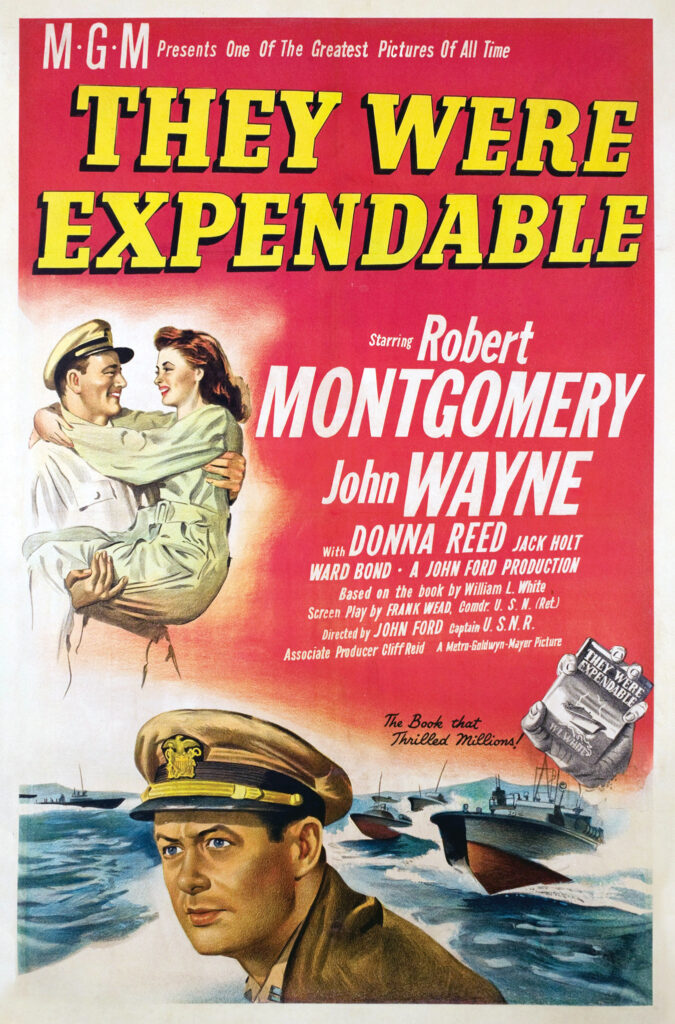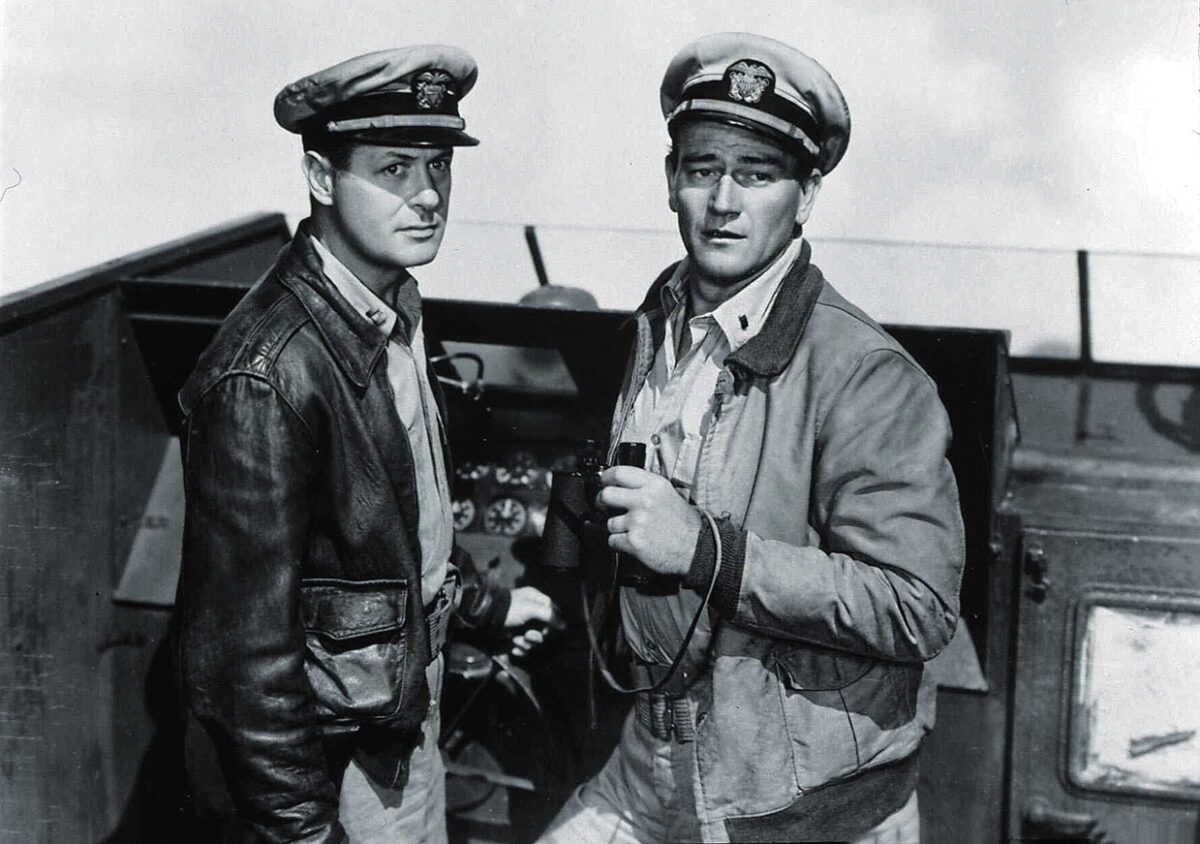Director John Ford went on inactive status from the navy in 1944 to film an adaptation of They Were Expendable, William Lindsay White’s book about PT boats during the opening months of the war in the Philippines. The movie starred Robert Montgomery, who had joined the navy after Pearl Harbor and, like the character he plays, commanded a PT boat. John Wayne, who had not served in the war, was billed second. Back on a film set, Ford remained the same cantankerous needler he had been before the war and he zeroed in on “Duke” Wayne, one of his favorite targets. In Print the Legend, his Ford biography, author Scott Eyman relates how Montgomery watched the director rake Wayne over the coals. “Can’t you manage a salute that at least looks like you’ve been in the service?” Ford asked in front of the cast and crew. Eyman related what happened next. “Finally, Robert Montgomery walked over, placed his hands on both sides of the director’s chair and said, ‘Don’t ever talk to Duke like that. You ought to be ashamed.’ The set fell silent. A break was ordered, and Ford ended up in tears.”
Despite the turmoil on set, They Were Expendable ended up being one of Ford’s finest films, a melancholic love letter to PT boats and to the navy in general.
When the film opens in Manila on the eve of war in 1941, Lieutenant John “Brick” Brickley (Montgomery) wants to demonstrate the potential of the PT boats he commands. His admiral is dismissive (“In wartime, I prefer something more substantial,” he says). So is his second in command, Lt. (j.g.) Rusty Ryan (Wayne). Rusty wants a transfer to destroyers.
Then the war comes.
In one early scene, Rusty receives a finger wound that becomes infected and Brick orders him to the hospital on Corregidor. There he strikes up a brief romance with nurse Sandy Davyss (Donna Reed). Like everything else in the movie, the romance is realistic and understated. Rusty invites Sandy for dinner at the hut serving as the officers’ club, where sailors hidden in the crawl space beneath the building serenade them. It’s a touching scene, but Ford understands that romance is impossible under these conditions. The last time the two speak is over a field telephone as Rusty prepares to depart on a mission and Sandy remains on Corregidor as the Japanese move closer. The conversation gets cut off abruptly when higher-ups commandeer the line. Rusty—and the audience—never learn Sandy’s fate.

Ford uses his own naval experience to create a sense of authenticity. There’s no place for cinematic heroics. Earlier in the film, as Brick chafes at the limited role his boats have been given, the admiral compares the situation to a baseball game. If the manager tells you to hit a sacrifice bunt, that’s what you do. “You and I are professionals,” he says. At the end, when Rusty decides to give up his seat on the last plane out to Australia so he can join the guerrilla fight against the Japanese, Brick calmly reminds him that they have their orders. Rusty sits back down.
Brick’s PT boats do see combat and those who like watching these speedy plywood craft in action will enjoy those sequences. They also get one vital mission when they spirit “the General” out of the war zone so he can continue the fight from Australia. Although the General remains nameless, audiences certainly recognized him as Douglas MacArthur. In real life, John D. Bulkeley, the Medal of Honor recipient on whom Montgomery’s character is based, did transport MacArthur and his family south to safety on Mindanao, where B-17s then flew them to Australia.
One of the movie’s greatest strengths is its eye for detail—when Brickley grabs a pair of scissors to estimate the distance on map; the terrified faces of wounded soldiers on Corregidor as Japanese bombs fall; the cook’s instructions to use a pinch of salt in the pancake batter; the way Sandy brushes her hair and puts on a string of pearls before sitting down to dinner with the officers; the fact that Rusty demands aviation fuel (PT boats used Packard engines adapted from airplanes). It is also beautifully filmed, with haunting shots of the shadowy and wet tunnels of Corregidor and some pulse-pounding sequences of PT boats dodging shell bursts.
They Were Expendable turned out to be one of John Ford’s best films, but it was not a huge box office success when it was released at the end of 1945. It is a war movie in a minor key—subdued and somewhat melancholy. It matches the film’s subject matter: the American experience in the Philippines at the start of the war did not go well, either. No doubt, audiences who had just seen the terrible war come to an end were not eager to relive its grim early days, no matter how beautifully photographed.






